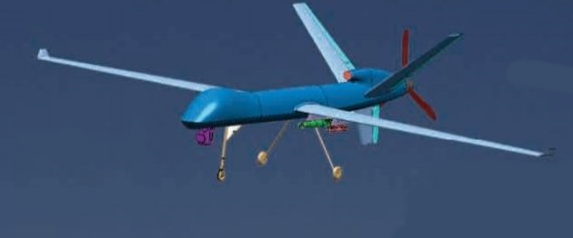SOURCE: RAUNAK KUNDE / NEWS BEAT / IDRW.ORG


The Indian Ministry of Defence’s (MoD) plan to develop a High-Altitude Long-Endurance (HALE) UAV program through the Special Purpose Vehicle (SPV) model seems to be hitting a roadblock. This initiative, intended to leverage private sector expertise for indigenous military equipment development, is facing an unexpected hurdle – a preference for foreign collaboration among some potential Indian participants.
The MoD’s push for private involvement comes after the setbacks faced by the previous Tapas program led by DRDO’s ADE (Aeronautical Development Establishment). Delays and technical shortcomings plagued Tapas, prompting the MoD to seek a new approach. The SPV model was envisioned as a way to leverage private sector expertise and expedite the HALE UAV program.
While DRDO-ADE had proposed a HALE UAV design and collaborated with the Indian Armed Forces to define technical specifications, the MoD aimed for a more significant role for private companies. However, the response seems to be less than enthusiastic.
According to sources at idrw.org, the MoD’s proposal hasn’t garnered much interest from Indian private companies. Instead, some companies appear to be prioritizing partnerships with international Original Equipment Manufacturers (OEMs).
The reasons behind this preference for foreign collaboration are not entirely clear. Developing a HALE UAV program is undoubtedly complex, and some Indian companies might feel they lack the experience or resources to undertake such a project independently. Partnering with foreign companies could provide them with essential expertise and potentially accelerate the development process.
Tata, for instance, has proposed converting a German-made Grob G180 SPn business jet into an unmanned HALE platform. Similarly, Adani Defence is reportedly interested in developing a HALE UAV based on an Israeli Medium Altitude Long Endurance (MALE) UAV design.
The MoD’s vision for an indigenous HALE UAV program faces a critical juncture. While foreign collaboration can offer advantages, it raises concerns about long-term dependence and potential limitations on technology transfer. The success of the SPV model will hinge on finding a way to incentivize Indian companies to invest in domestic research and development alongside potential foreign partnerships.
NOTE : Article cannot be reproduced without written permission of idrw.org in any form even for YouTube Videos to avoid Copy right strikes. Websites doing illegal reproductions will get DMCA and Legal Notices.